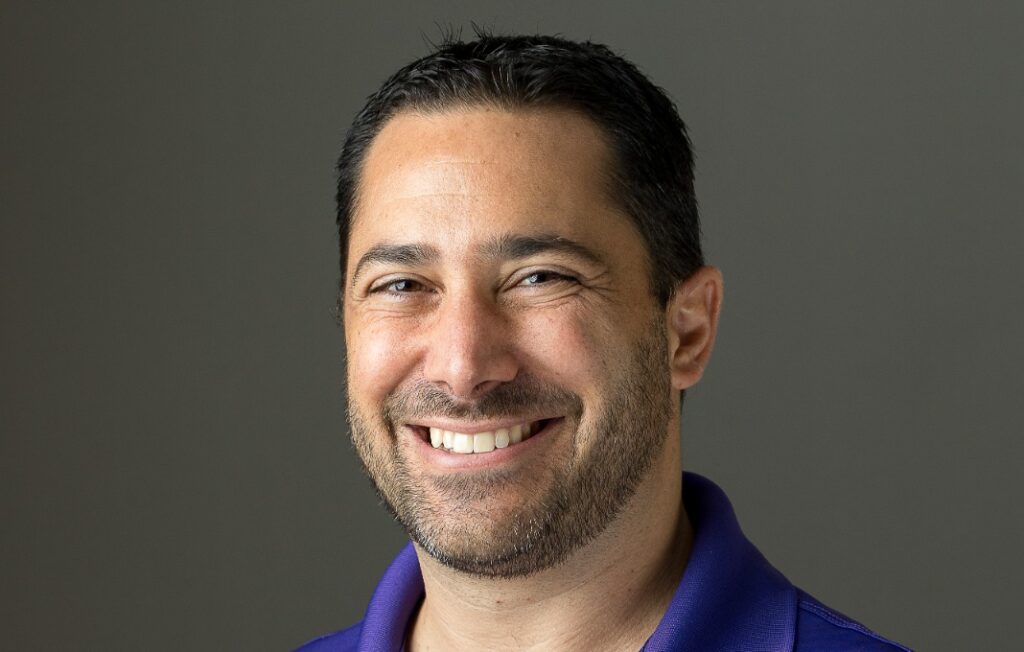Social media has been both a treasure chest and a Pandora’s box for companies and their leaders, a prickly phenomenon of the internet age whose business implications continue to cascade faster than CEOs and CHROs can create and refine their responses. Thousands of brands have raised their profiles and created huge marketing relevance through savvy use of TikTok, Twitter, LinkedIn, Facebook, Instagram and other social media. At the same time, many companies have felt the sting of social media opprobrium for a misstep, the helplessness of being the target of a meme or the pain of having to fire or otherwise discipline employees for social media missteps that cast their employer in a bad light.
Consider that Dollar General fired Tampa store manager Mary Gundel last year after she went on TikTok to blame the company for limiting the number of employees and slashing their hours. New Jersey medical provider AtlantiCare let customer-care executive Heather McVey in 2020 go after she criticized the Black Lives Matter movement on Facebook. In Edmonton, Alberta, in 2016, Connie Levitsky lost her new job as a sales clerk for plus-size women’s Addition Elle after she used the word “fat” on Facebook to describe the chain’s customer base.
And even a decade ago, in a tweet heard around the world, InterActive executive Justine Sacco was sacked as head of corporate communications for Barry Diller’s company after she posted—right before a flight from London to Cape Town—“Going to Africa. Hope I don’t get AIDS. Just kidding, I’m white!”
Blue Yonder’s Duncan Angove is among company chiefs grappling with the implications of social media at the highest levels. “Should we or shouldn’t we do content moderation?” says the CEO of the supply chain management company. “What about free speech? But to what extent is every employee a brand ambassador for us? We don’t take political positions in anything that we comment on, but we don’t really try to moderate what our associates say either.”
Or, as American University management professor Mark Clark puts it, “You have to bring employees to the forefront here. ‘We want to respect your right to engage in the public sphere and encourage that to some degree, but understand that this is a private enterprise, and we want to please stakeholders. We have to do that together to some extent.’”
Social media has come to dominate both brand marketing and the public square at the same time that a new generation of workers expect their employers to take and declare definitive stands on issues of the day, and to adopt points of view that stem from a sublime “purpose”—one that rises above mere profit-making and takes into account multiple stakeholders, including employees, customers and the commonweal, even at the expense of shareholders and owners.
“The relationship between the employee and the employer has added a new element—it’s not just clock in and leave,” says Jen Brace, trends and futuring manager for Ford Motor. “There are more conversations around all the social issues and things in the media. It’s common to expect to hear what your company says about the news.”
It’s a confusing battlefield. Social media “wins” can be intoxicating; fireable offenses can be disastrous. But achieving the first and avoiding the latter is no easy feat. Here are some ideas for leaders to navigate the social-media era:
• Rah-rah. Most companies, of course, actively promote themselves via social media, and many aren’t shy about pressing their employees into the activity. CNext, for example, encourages “our team to share things on social media, especially LinkedIn, captions and things we recommend, messaging that is broader than our products and services,” such as advocating promoting black and women’s history months and charities such as the American Heart Association, says Cheryl Stokes, CEO of the leadership-development outfit. “People may choose to edit or adapt it.”
Paycor provides “a lot of templates on key [marketing] topics, and 95 percent of our people use the information provided by marketing that enables them to express a message in an appropriate manner,” says Raul Villar, CEO of the provider of human capital management software. Blue Yonder provides “suggested content” such as press releases or blog posts and tells employees, “Please make it your own,” says Marina Renneke, head of corporate communications.
Circuit seeks out employees who are avid posters on their own. “They already see social media’s value, which makes your work easier,” says Jack Underwood, CEO of the provider of delivery-routing software.
Many companies incentivize employees. “Do they want a shout-out on the corporate page?” says Shawn Plummer, CEO of The Annuity Expert, a financial and insurance agency. “Or an incentive to sweeten the deal, like extra paid time off?”
• Manual transmission. Spelling out social-media policy in as many dimensions as possible, as clearly as possible, is a corporate sine qua non in today’s landscape. Toyota, for instance, in a typical approach, requires social-media posters to disclose their relationship with the company while stressing that their views are their own and not on behalf of the company. The automaker also makes it clear that activity “with threats of violence, malicious acts, intimidation, hate speech, harassment, discrimination or bullying may violate the company’s policies and lead to corrective action, up to and including termination.”
Be as granular as possible about what’s acceptable and what’s not. “If the policy bans hate speech on personal social media, employees should receive guidelines on what constitutes hate speech,” says Fernanda Anzek, a managing director for HR operations for HR services provider Insperity. And because filming in the office, for instance, is a popular practice for social-media posts, concoct a policy on what can and can’t be shown.
Make sure prescribed practices are tied to other corporate expectations, such as those on discrimination and sexual harassment. “You can say a person is being terminated or disciplined because what they’re saying on social media violates our other policies,” says Mark Kluger, co-founding partner of the Kluger Healey law firm. “It creates a stiffer framework, rather than just a subjective reaction to every social-media post that might be controversial.”
Consistency is key. “Make sure it’s clear and in writing and that you apply it evenly,” says John Veysey, partner with the Nelson Mullins law firm. “The company could discipline an employee for what they did on social media, but when the next employee comes along, you can’t discipline them differently.”
• In the family. Companies largely can control what employees say in online forums, such as an internal Slack channel. “Family and friends may say you have the First Amendment right to tell your boss what you really think of them,” Kluger says. “But they have the right to fire you for doing it. You can’t say, for example, ‘My company makes defective products.’”
Even this field comprises a vast gray area. The National Labor Relations Act says employers, union or non-union, can’t stifle employees’ expression of their right to protest terms and conditions of employment, including engaging in dialogue about things like wages. “You can say, ‘We have a crappy health plan here,’” Kluger says. “Or if it’s about substandard wages, the employer can’t terminate or discipline an employee for that kind of content.”
The field of protected topics keeps expanding. For instance, a push by activist shareholders and non-governmental advocacy groups for greater transparency of compensation information is producing more freedom for employees to discuss internal pay issues on social media, experts say. At the same time, under the increasing legal and regulatory scrutiny of “hostile” work environments, companies may have the obligation to act if an employee uses social media to post something about a fellow worker that could be construed as harassment or incitement of violence.
• The biggest battlefield. Corporate and employee discussion of political, cultural and social issues has driven online talk in maddeningly new directions. “Millennials started this by putting a lot of pressure on companies to express views,” Kluger says. Companies may “want to stay neutral for whatever reasons, but they can’t. They’re being forced internally to take stands by employees and by consumers.”
In turn, says Veysey, “many companies are asking employees to promote these ideas on behalf of the company, saying, ‘This is our mission, and we want buy-in from our workforce.’”
Tom Shea is one CEO trying to balance on this potentially treacherous beam. “We really want to be apolitical and support the commonalities in the company,” says the head of OneStream Software, a fintech unicorn. “It’s conceited for a company to tell someone, if they want to do something that’s legal and lawful, that they can’t express themselves outside the business.”
Politicians are beginning to intervene. In 2021, for instance, Florida passed the “Stop WOKE Act,” which prevents companies from subjecting any employee “to training or instruction that espouses, promotes, advances, inculcates, or compels such individual to believe” concepts such as critical race theory, which the state’s Republican leaders believe breeds division.
• States of play. More and more states are wading into the maelstrom by legislating protections that can apply to social media. Five states have laws that prohibit employers from terminating employees for off-duty conduct. Some states also extend whistleblower protection and limits on non-disparagement agreements, Veysey says, meaning that “companies can’t buy an employee’s silence about [corporate] behavior he thought was unlawful.”
Another changing consideration is “a trend of state laws that prohibit companies from disciplining employees for lawful out-of-work conduct,” the attorney says. In California, for instance, an upcoming law broadening the legality of cannabis consumption is also expected to extend protection of social-media commentary to that discussing marijuana use.
• Enforcing conformity. Employers are harnessing social media as a powerful weapon to screen potential hires and fits for their culture, but of course job candidates are on to that fact. Colleges “are doing a better job of educating students about their social footprint, so they come in more aware that it can follow them anywhere,” says Paaras Parker, Paycor’s CHRO.
Recruiting for cultural conformity doesn’t always stop missteps, so employers sometimes need to act. “We had an incident when one employee didn’t understand the implications of what they had posted,” says Andrew Pierce, CEO of legal-services provider Real Estate Holding. “We explained where the problem lay to the entire workforce and asked that the post be removed.”
Summarizes Veysey, “If a company says that, regardless of the legal headwinds we’re facing, we want to take a stand on some recent initiatives such as ESG, and we’re going to continue to do that, fine. But it’s a big difference to say that employees need to get in line and follow that. You don’t want to make it a requirement in terms and conditions of employment.”
• A chief’s role. CEOs can establish paths for the company to sublimate sentiments that might end up on social media. Paycor, for instance, taps into its network of employee resource groups that “allow employees to educate each other on different topics that are important to them,” Villar says.
Establish an ombudsman’s office, for instance. Or, suggests Anzek, “Set protocols advising whether managers should follow their reports on social media, or consider one designated employee to monitor social media or a task force to address concerns with employees in a fair-minded way.”
As a matter of effectiveness and out of legal concern, experts say chiefs should insulate themselves from the front lines of social-media battles. “Be clear,” says Veysey, “about where employees need to turn with questions about this, and make sure the CEO isn’t on the hook for decisions made in any of these gray areas so they’re not asked to sit down for a deposition.”
At the same time, Clark says, CEOs must live up to their company’s own social-media policies. “It can’t be a ‘for me but not for thee’ kind of thing. You have to make sure you’re role-modeling.”
• Thought police. Increasingly, politically minded employees—not just their employers—also are watching one another with an interest in enforcing corporate point-of-view conformity. A recent global survey by Ford showed that 50 percent believe brands should hold employees accountable for the things they say and do outside of work, including a remarkable 56 percent of Americans who were polled.
“If a brand says they value the environment or a specific social movement, I do think they expect the brand to back it up with what their employees are doing,” says Brace of Ford, which conducts an annual worldwide poll of tens of thousands of people. “They want alignment. And I expect that kind of attitude to increase.”
For many leaders, this is a thorny prospect. “If you believe in American ideals, then certainly a company telling people what they can and cannot say doesn’t fit well,” says Stokes. “On the other hand, we as an organization have values and ways in which we operate where, if someone is putting out hate speech or something else totally egregious, then that would be cause for a conversation about that employee’s behavior.”








